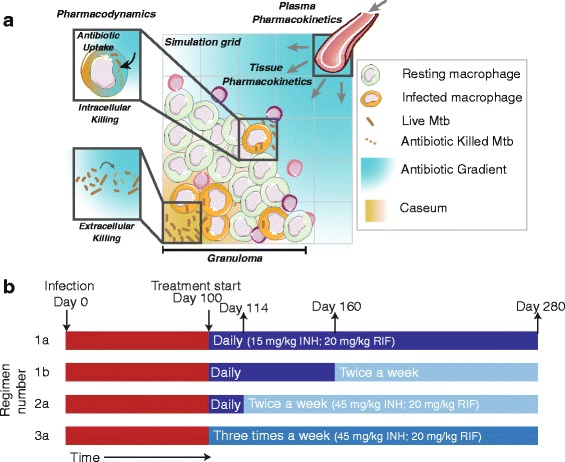Fig. 1.

a Computational model. Granuloma formation and function, plasma pharmacokinetics (PK), tissue PK and pharmacodynamics (PD) are integrated into a single computational framework. Cell recruitment, movement, states (e.g. activated), actions (e.g. tumor necrosis factor secretion), interactions (e.g. macrophage activation) and death of macrophages and T-cells are followed over time, with granuloma formation and function as emergent behavior. Bacteria are represented as three subpopulations: intracellular, extracellular replicating and extracellular non-replicating (i.e. residing in caseous areas). Plasma PK equations determine the concentration of antibiotic at vascular source sites on the simulation grid. Antibiotics permeate the vascular wall, diffuse within the granuloma, penetrate host cells and kill bacteria based on local intracellular and extracellular concentrations. Further model details are available in [20]. Artwork in (a) was constructed by combining and modifying artwork elements from Servier Medical Art (http://www.servier.com/Powerpoint-image-bank) provided under the Creative Commons Unported License 3.0. b Simulated antibiotic dosing regimens. Simulated infections are initiated at day 0 and granulomas evolve for the first 100 days (red bars). Regimens 1a, 1b, 2a and 3a, recommended by the CDC/WHO [22], are composed of different doses and frequencies. Regimens 1b and 2a switch from daily to 2 doses per week after 60 and 14 days of treatment, respectively. Each regimen is implemented with INH, RIF and INH + RIF
